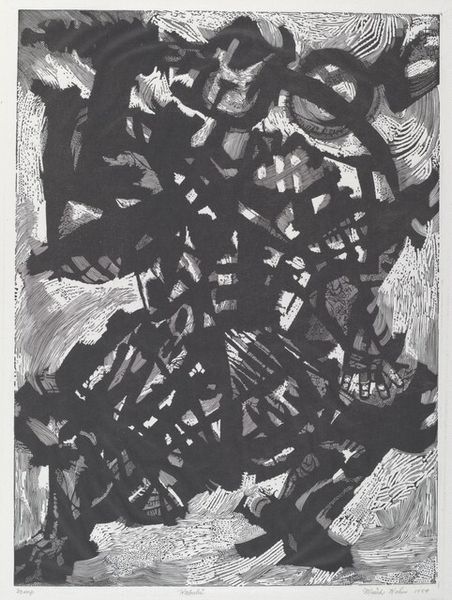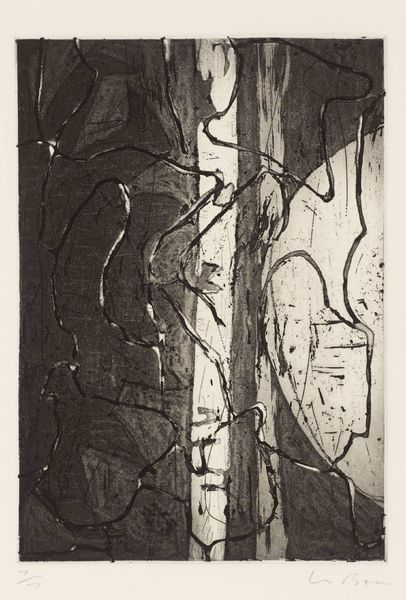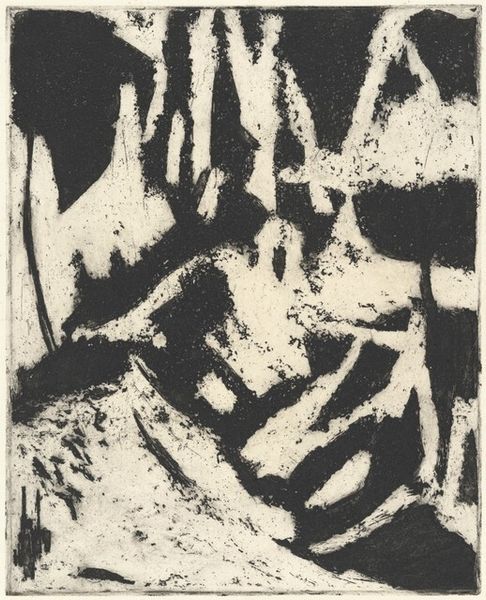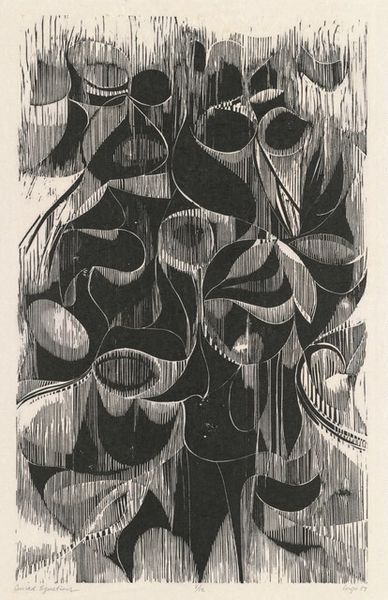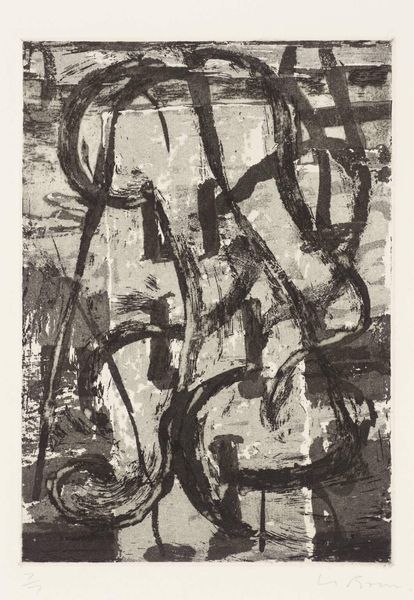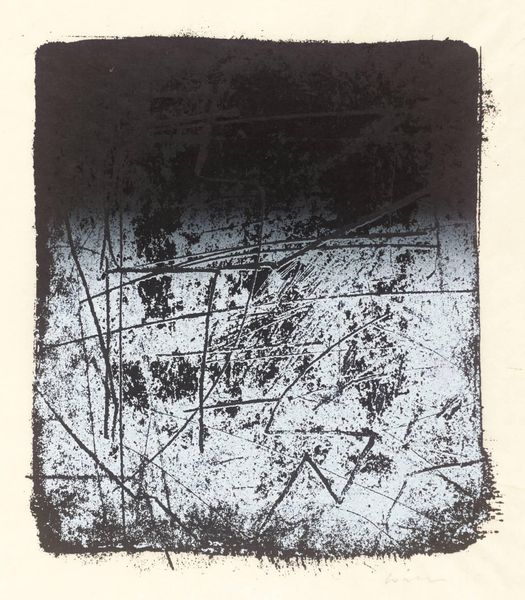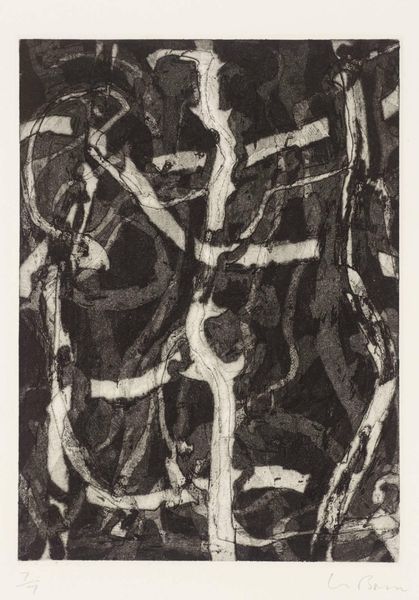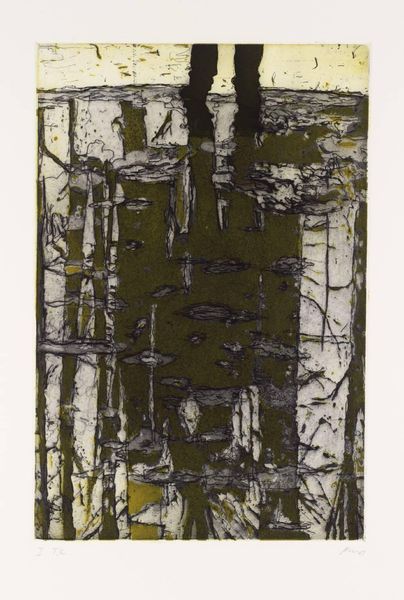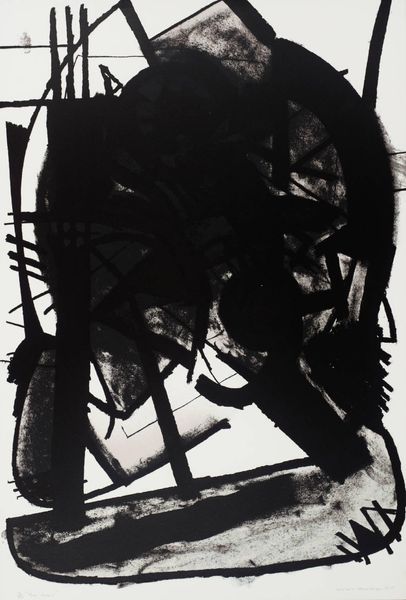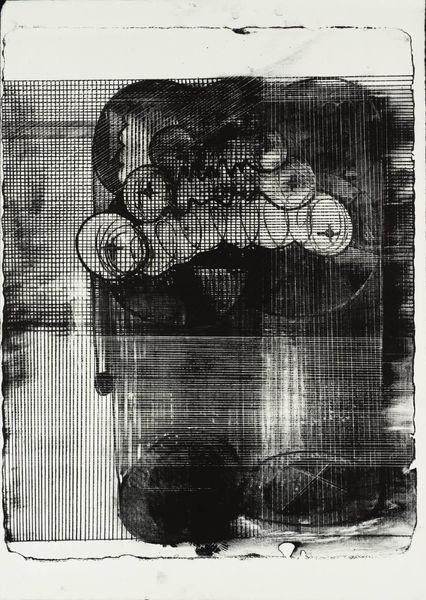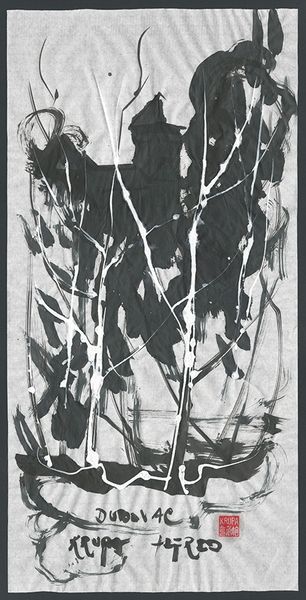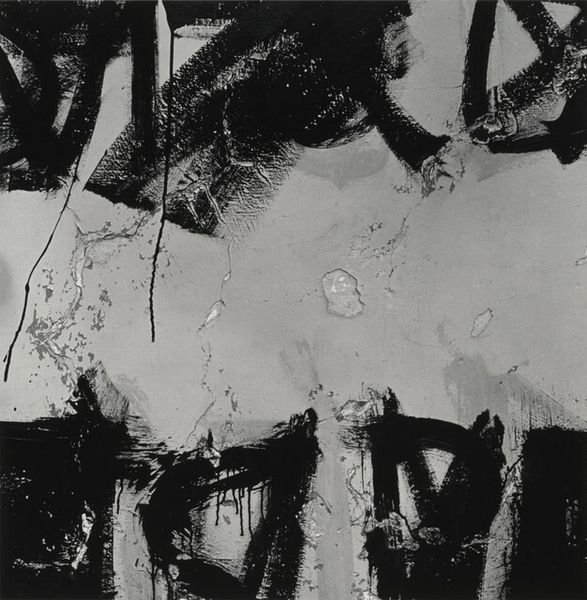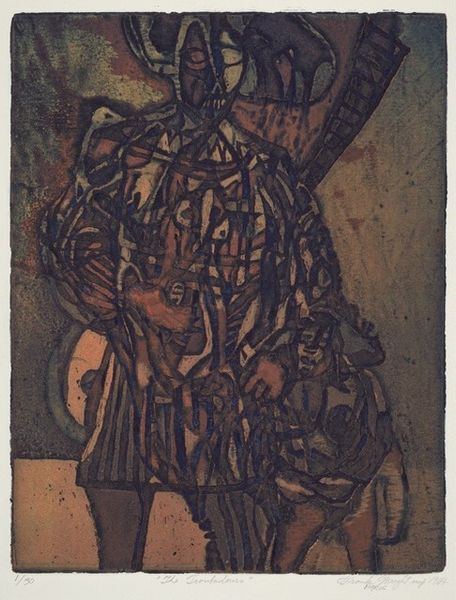
print, ink
#
abstract-expressionism
#
ink drawing
# print
#
ink
#
linocut print
#
geometric
#
abstraction
Copyright: National Gallery of Art: CC0 1.0
Editor: This is "Lovers," a 1961 print in ink by Matsumi Kanemitsu. The abstract shapes are chaotic but still visually linked. How would you interpret this work, given its historical context? Curator: Considering Kanemitsu's abstract expressionist style and the period, I immediately see the social and political anxiety of the Cold War era reflected here. The fractured geometric forms, the heavy use of ink… do you see a kind of visual fragmentation, a potential breakdown of connection despite the title, "Lovers?" Editor: I do now that you mention it. The geometric shapes seem to strain away from each other instead of converging. Do you think this connects with the anxieties surrounding gender roles during the 1960s, particularly regarding traditional expectations for women in relationships? Curator: Absolutely, that’s a keen observation. Think about how Abstract Expressionism, while seemingly apolitical, was also largely dominated by men. Kanemitsu, a Japanese-American artist, enters this arena, playing with forms suggesting intimacy while simultaneously disrupting that narrative. Where do you see the disruptive elements at play, and how could these reflect societal tensions? Editor: Maybe in the heavy contrast and starkness of the ink itself? It's not exactly romantic, is it? It makes me think of power dynamics too, how societal constraints impacted personal relationships. Curator: Precisely. The lack of soft, flowing lines denies a sense of easy harmony. I would ask, how does it question our assumptions about love as inherently harmonious and uncomplicated? This makes me reconsider who, historically, has had the privilege of having uncomplicated relationships and what expectations might exist based on intersectional experiences. Editor: I didn’t think of it that way before. Looking closer, it is like the forms are struggling against the very idea of conforming to traditional ideals of love and partnership. Curator: And the struggle itself becomes the point. Editor: So, what I'm getting from you is that through abstraction, the artist has subtly woven a narrative about social anxiety, power, and perhaps a challenge to conventional ideals of relationships. Thank you, this has been super enlightening.
Comments
No comments
Be the first to comment and join the conversation on the ultimate creative platform.
